/
Questions/
Coursework/
Figure 1 shows a tower crane with the properties listed in Table 1. The distance between the trolley and mast: Statics and Dynamics Course Work, NUN, UK
Looking For Plagiarism Free Answers For Your UK College/ University Assignments.
BUY NOWFigure 1 shows a tower crane with the properties listed in Table 1. The distance between the trolley and mast: Statics and Dynamics Course Work, NUN, UK
| University | Northumbria University Newcastle (NUN) |
|---|---|
| Subject | Statics and Dynamics |
Question 1
Figure 1 shows a tower crane with the properties listed in Table 1. The distance between the trolley and mast x can change from 0 to dj (Figures 1 and 2).
Table 1: Specifications of the tower crane
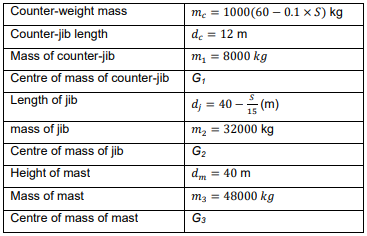
- Draw the free body diagram of the tower crane and calculate the reactions at O when the mass of the lifted body 𝑚 = 5000 𝑘𝑔 and the distance 𝑥 = 20 m
- When 𝑚 = 5000 kg, find and plot the moment at O as a function of 𝑥, and determine the value of 𝑥 when the moment at O is zero
- If the magnitude of the maximum moment at O is 2,500 kN∙m and the magnitude of the maximum force at O is 1,650 KN, calculate the maximum mass of the body that the tower crane can lift regardless of the trolley location.
- When lifting heavy bodies with two points is required, a spreader beam is used (Figure 3). If 𝑤₁ = 0.7 m, 𝑤₂ = 1.4 m, 𝑚 = 1000 × (5 − 0.010 × 𝑆) 𝑘𝑔, and the mass of the spreader is negligible:
1. Calculate the tension forces in the slings AB and CD when the lifted body is not tilted
2. To prevent the body from tilting, what should be considered in the design and operation of the spreader beam?
Buy Answer of This Assessment & Raise Your Grades
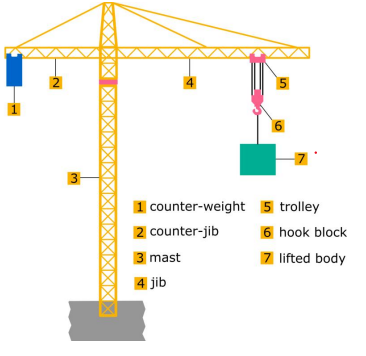
Figure 1: its model
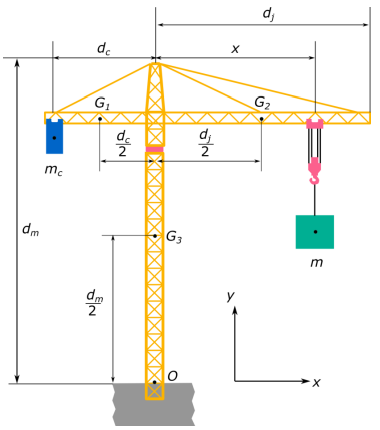
Figure 2: Tower crane specifications
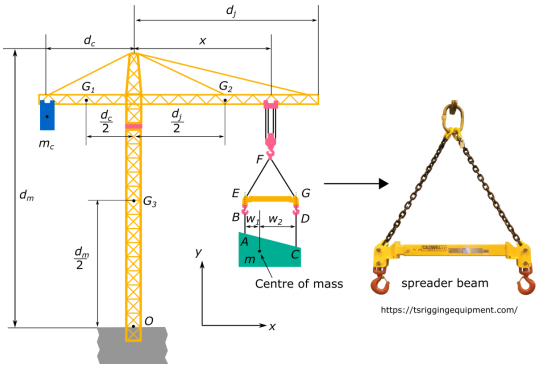
Question 2
The car acceleration time history for 62 seconds (i.e., between 2:42:27 pm and 2:43:29 pm) is shown in figure 4. During this time, the car accelerates from 36 mph (Miles per hour) to 200 mph and then decelerated to 24 mph. your tasks for this question are,
- Calculate the velocity at time 𝑡₁ and 𝑡₂ in m/s, km/h, and mph. Individual 𝑡₁ and 𝑡₂ are provided for each student in the attached file
- Bring evidence from the video to show the accuracy of your calculation. For example, the calculated velocity at 𝑡 = 62 (𝑠) is 29.3 mph. The actual velocity based on the following figure is 24 which is close to the calculated velocity
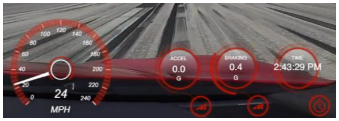
- Compare your calculated velocities with the actual velocities of the car and calculate their differences in percent.
- Explain the reasons for discrepancies between calculated and actual velocities.
Do You Need Assignment of This Question
Get help by expert
Are you struggling with your Statics and Dynamics coursework? Look no further! At Diploma Assignment Help UK, we offer comprehensive assistance for your coursework needs. Our team of experts is well-versed in this subject and can help you excel in your assignments. From analyzing complex data to understanding the principles of motion, we’ve got you covered. Get top-quality guidance and support at affordable prices.
Recent solved questions
- ILM: Assess own leadership behaviours and potential in the context of a particular leadership model and own organisation's working practices and culture: Leadership skills and development, Assignment, UOA, UK
- ILM: Describe the factors that will influence the choice of leadership styles or behaviours in workplace situations: Leadership skills and development, Assignment, UOA, UK
- ATHE Level 7 Unit 5 : You Have Been A Senior Manager For Several Years And Have Decided That Your Next Career Move Should Be To Take Responsibility: Personal Development for Leadership and Strategic Management Assignment, UK
- You are required to prepare a 5-year strategy review to shareholders for evaluating the business simulation: 5-year strategy review to shareholders, Report, UOEL, UK
- CMI Unit 502: Approaches to achieving a balance of skills and experience in a team: Principles of Developing, Managing and Leading Individuals and Teams, Assignment, UK
- CMI Unit 502: Principles of Developing, Managing and Leading Individuals and Teams, Assignment, UK
- UNIT-701: How the principles of strategic leadership can be applied to respond to complex organisational challenges: Strategic Leadership, Assignment, CMI, UK
- UNIT- 701: The leadership behaviours and skills required to deliver strategic goals: Strategic Leadership, Assignment, CMI, UK
- UNIT- 701: Understanding of how the organisational context influences management and leadership practice: Strategic Leadership, Assignment, CMI, UK
- Evaluate the concept of evidence-based practice and assess how approaches to evidence-based practice: Evidence - based practices, Report, UOH, UK

